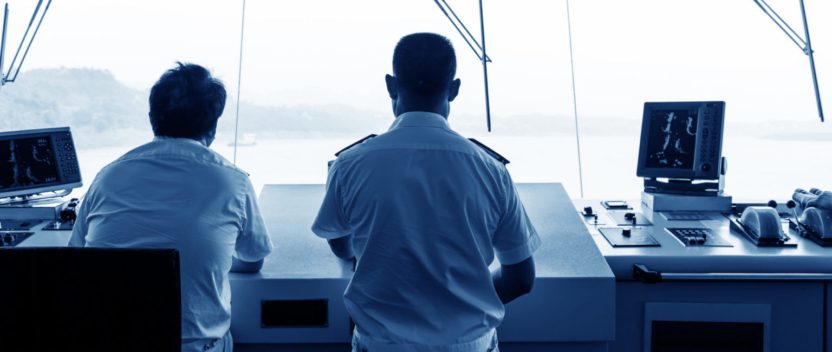Can Blockchain help design a better maritime internet?
When all you have is a hammer, so the old saying goes, everything tends to look like a nail. When a revolutionary technology such as Blockchain comes along, the temptation must therefore be to view it as the solution to something.
It’s a subject that is beginning to seep into shipping and the pace looks likely to quicken with the announcement of a joint venture between container giant Maersk and IBM. For these partners, the opportunity might be relatively straightforward, since Maersk moves physical cargo and financial information around the world, sometimes with little more than trust as the down payment.
The issue confronting anyone attempting to get to grips with Blockchain is to understand what it might mean for the shipping industry.
As Deanna MacDonald, CEO and Co-Founder of Blockchain Labs for Open Collaboration told the DigitalShip iShipping event in Copenhagen this month, Blockchain is a system of technical components whose abstract nature makes it challenging to explain.
Among these components are platforms, which are the application space for Blockchain, where users can contribute to and take from the open source computing that makes it possible.
This allows the creation of protocols, essentially rules that dictate the types of Blockchains that exist, the first and best known of which was for crypto-currency Bitcoin. Its second plank is ‘smart contracts’ which can be used to embed business logic and processes into a digital space, allowing for business work flows such as documents, messaging, systems or processes to be executed automatically.
Blockchain relies upon users – known as Miners or Validators – to check, confirm and record data, acting as gatekeepers to validate information. In Bitcoin the miner solves a cryptographic puzzle to mint the currency and is paid in that currency for their time and effort.
What makes Blockchain of interest to business as well as hackers is the very high levels of security that enables information exchange or transactions. Users sign to show that they contributed data using public or private keys but what can be seen and by whom depends on familiar read/write privileges.
Underneath the cryptography is a public ledger system or database of digital assets where assets are tracked and traced. Because the ledger is distributed among the network, users can contribute but the data can’t be compromised because it is stored among so many computers.
This fiendishly complicated arrangement, conceived as only a hacker could, is part a secure system of information storage and verification and part social experiment. Or as MacDonald helpfully put it: “the Blockchain provides the digital infrastructure on top of the internet of things. What it asks is can we not better organise the internet and have a single source of digital assets that we can all access?”
The answer for the majority, assuming they can grasp the concept, is maybe. Blockchain’s ‘origins’ in the crypto currency make it appear shady but financial information service providers are already pushing its adoption as a means of clearing the millions of equities, derivatives and other trades made globally every day.
The same is true of larger shippers, carriers and ports – anyone in fact with complex multi-party physical-financial transactions to complete. The paper trail that still dominates shipping, requiring dozens of documents per container move has been crying out for a solution for decades. But MacDonald says Blockchain is about going beyond digitising existing processes, it creates the opportunity to completely re-think approaches.
It opens up the potential for regulatory applications where large amounts of information must be validated and reported – and shipping has plenty of those – in a way that trades manpower for computing power.
“The Blockchain enables peer-to-peer exchange and because you can’t change the records even though the database is accessible by all, it enables trusted interaction between peers and businesses,” she continues. “Essentially you don’t need a third party to validate your information any more, you’ll have trusted immutable source that is tamperproof and common to all.”
This potentially opens up a market to improved checks and balances through the ability to track and store any kind of tangible or intangible digital assets. Reputation can be managed by viewing past dealings and transactions to verify if counterparties are valid.
If this degree of transparency sounds horrifying, MacDonald says the potential to create new types of network models that allow people to exchange information in a trusted and transparent way are clearly of interest to some.
MacDonald’s organisation BLOC has already worked with the Danish Maritime Authority to examine whether Blockchain could be used for compliance with EU MRV regulations. Putting in place a regime for the IMO’s global 2020 sulphur cap might be too big an ask by the deadline, but the IMO is set to begin its own CO2 data collection process, likely to be followed by some kind of regulation.
Some shipowners have pointed out that the issue facing the industry in 2020 is not compliance but enforcement of the regulations and how to ensure a level playing field that does not discriminate against those who want to show leadership.
MacDonald’s vision of Blockchain as a tool of good governance suggests applications in anti-corruption, faster payment and what she describes as ‘frictionless’ global trade. Proving regulatory compliance seems a natural extension.
“As a shipper of cargo, can you explore and conceive new ecosystems to move assets, create trust in your partners and your supply chain,” she asked. “There are lots of middlemen in the maritime industry and this could remove the need for many of them.”
As a tool of digital disruption Blockchain sits right in the middle of the current debate about whether established service providers are adding value or adding to problems in the supply chain.
Just like that conversation it requires that we set aside some preconceptions. In a business where many sectors are still struggling to make a profit that might sound like a stretch, but this is precisely why liner operators are interested, if it enables them to get paid earlier and faster.
Whether or not one buys into the shift of computing power from centralised sources to a wider community of users, it is hard to argue with MacDonald’s assertion that Blockchain “is going to be the next layer of the internet, it will enable us to use the internet like we haven’t done before.”


